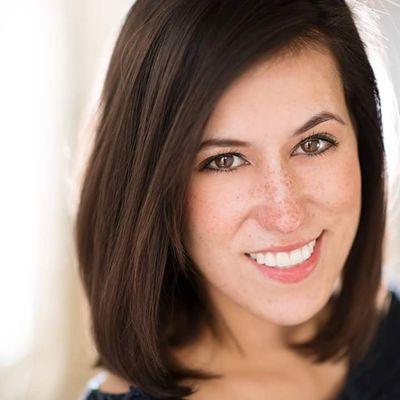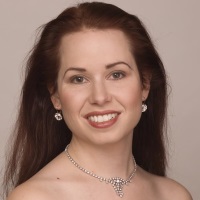Organ Symphony
Sunday, May 21, 2017 • 3:00 p.m.
First Free Methodist Church (3200 3rd Ave W)
Orchestra Seattle
Seattle Chamber Singers
Clinton Smith, conductor
Karina Brazas, soprano
Margaret Gawrysiak, mezzo-soprano
Paul Tegels, organ
Program
Antonio Vivaldi (1678 –1741)
Gloria in D major, RV 589
Jay Anthony Gach (*1955)
Allelujah: Quiet Music for Unquiet Times [world premiere]
— intermission —
Camille Saint-Saëns (1835 –1921)
Symphony No. 3 in C minor (“Organ”), Op. 78
About the Concert
Vivaldi’s joyful Gloria — today his best-loved choral work — languished in oblivion for two centuries, until a 1939 performance reintroduced it to the modern world. Of his “Organ” Symphony, Saint-Saëns declared: “I gave everything to it I was able to give. What I have here accomplished, I will never achieve again.” Tom Service calls it “a magnificent and fantastical symphonic machine that’s an apotheosis of the orchestral technology of the late 19th century … the definitive ‘steampunk’ symphony.”
About the Soloists

Soprano Karina Brazas, described as “fiery and fetching” (Ladue News) and as performing with “sweetness, clarity, great beauty and innocence” (Broadway World), began the 2016 –2017 season as Yum-Yum in Gilbert and Sullivan’s The Mikado with a return to Union Avenue Opera in Saint Louis. The 2015 –2016 season saw her as Young Pilgrim in Opera Omaha’s new-work preview of A Stranger from Paradise, in recital with conductor Hal France, as the soprano soloist in Fauré’s Requiem with OSSCS and the St. Cloud Symphony, and as Zerlina in Don Giovanni with Union Avenue Opera. Ms. Brazas made her mainstage debut at Central City Opera as Kitty Hart in Jake Heggie’s Dead Man Walking. Other recent performances include Susanna in Le Nozze di Figaro (Central City Opera), Gretel in Hansel and Gretel (Opera Omaha) and Rosina in The Barber of Seville (Opera for the Young). She has been a regional finalist and multiple-time award winner with the Metropolitan Opera National Council Auditions, and has been featured as a soloist with the Coeur d’Alene Symphony, Lincoln Symphony and Washington-Idaho Symphony. Learn more: karinabrazas.com, @karinabrazas

Mezzo-soprano Sarah Mattox has sung principal roles with Seattle Opera, Cincinnati Opera, Chicago Opera Theater, Palm Beach Opera, Lyric Opera Cleveland and many others. Favorite roles include Dorabella in Così fan Tutte, the Witch in Hansel and Gretel, Suzuki in Madama Butterfly, and the title role in Carmen. A first-prize winner of the Belle Voci National Competition, her numerous solo appearances include concerts with the Seattle Symphony, Northwest Sinfonietta and the Seattle and Portland Baroque Orchestras. She made her Carnegie Hall debut in 2007 under the baton of John Rutter, and has since been invited back three times. As a composer, Ms. Mattox’s works include the award-winning song cycle Rumpelstiltskin and the Falcon King and an opera, Heart Mountain, presented in workshop performances in 2015 by Vespertine Opera Theater under the baton of Stephen Stubbs. Learn more: sarahmattox.com

Organist Paul Tegels, a native of the Netherlands, is Associate Professor of Music and serves as University Organist at Pacific Lutheran University. He previously taught at Bethany College in Lindsborg, Kansas. Mr. Tegels received his Doctor of Musical Arts Degree in Organ Performance and Pedagogy and his Master of Arts Degree in Choral Conducting from the University of Iowa, where he studied organ with Delores Bruch and choral conducting with William Hatcher. Other degrees and awards include the Artist Diploma and the Master of Music Degree in organ performance from the New England Conservatory in Boston, where he studied with Yuko Hayashi and William Porter. He is the recipient of a Fulbright Scholarship from the Netherlands-America Commission for Educational Exchange. Mr. Tegels has performed extensively in solo and ensemble concerts in the Europe, Japan and New Zealand, and has played some of the most significant organs in the United States. Learn more: plu.edu/organ
Program Notes
Antonio Vivaldi
Gloria in D major, RV 589
Vivaldi was born March 4, 1678, in Venice and died July 28, 1741, in Vienna. In addition to vocal soloists and chorus, he scored his Gloria for oboe, trumpet, strings and continuo.
Antonio Vivaldi’s father was a professional violinist in the orchestra of the prestigious Basilica di San Marco in Venice, and Antonio proved to be a highly talented violinist himself. Indeed, his instrumental music marks one of the peaks of Italian Baroque violin composition. According to his own account, within a year of his ordination to the priesthood in 1703, Antonio Vivaldi no longer wished to celebrate mass, possibly due to physical ailments (“tightness of the chest”). It may be, however, that Vivaldi, called the “Red Priest” because of his hair color, was feigning illness — he is said to have left the altar at times in order to write down a musical idea that had suddenly come to him. In the same year as his ordination, Vivaldi was appointed maestro di violino at the Ospedale della Pietà, one of the Venetian girls’ “orphanages.” This “hospital” was in fact a home for the illegitimate daughters of noblemen and their numerous mistresses, which is reputed to have housed as many as 6,000 girls: it was generously endowed by the girls’ “anonymous” fathers and the well-cared-for young ladies received musical training a central part of the curriculum. Many of Vivaldi’s hundreds of concerti were exercises that he would play with his talented students. He was associated with the Pietà, usually as music director, until 1740, teaching violin, composing oratorios and concertos for weekly concerts, and establishing a shining reputation both at home and abroad. During the years in which he composed operas (1713 –1739), the Venetian theaters staged more works of Vivaldi’s than of any other composer. He also traveled to Rome, Mantua and elsewhere to supervise performances of his operas. Around 1740 he took a position at the court of Emperor Charles VI in Vienna, where he died.
As a composer Vivaldi was both unbelievably speedy (he is said to have completed the opera Tito Manlio in five days, and he prided himself on being able to write a concerto faster than a copyist could write it out) and incredibly prolific (approximately 500 concertos exist, as well as 23 sinfonias, 75 solo or trio sonatas, 49 operas, about 40 cantatas, some 50 motets, and many oratorios). Although he is known today for only a few instrumental works (chiefly the cycle of violin concerti known as The Four Seasons), Vivaldi’s influence is clearly evident in the forms of later Baroque music, notably in the original compositions of Bach and his German contemporaries, and also in Bach’s transcriptions for harpsichord and organ of various Vivaldi concerti. Indeed, Vivaldi was one of the most significant figures in the transition from late Baroque to early Classical style because of the economy of his writing for string orchestra, his theatrical conception of the role of the instrumental soloist, the conciseness of his themes, the grace and clarity of his forms, the driving energy of his rhythms, the continuity of the flow of his musical ideas, and his emphasis on the sonic contrasts and tensions between soloists and larger ensembles.
The Gloria, a joyful hymn of praise and worship, is part of the Roman Catholic mass. Its opening phrases have their origins in the song, recorded in St. Luke’s account of Christ’s birth, that the angels sang to the shepherds. Between 1713 and 1719, Vivaldi kept the Ospedale della Pietà well supplied with sacred music, and this setting of the Gloria, one of two which he composed in D major, is probably among the earliest of these works. Divided into 12 relatively brief movements contrasting in mood, musical texture, and instrumental and vocal color, it nevertheless exhibits a coherent overall musical structure.
The first movement, “Gloria in excelsis Deo,” opens with octave leaps and repeated patterns of notes that establish the triumphant key of D major and set a mood of pomp, grandeur and anticipation; trumpet and oboe add regal color to the orchestral palette, and the declamatory entries of the chorus maintain rhythmic momentum. The tonality changes to B minor for “Et in terra pax hominibus,” a meditative movement that features a gently throbbing string accompaniment coupled with poignant chromaticism.
In the joyful G-major duet “Laudamus te,” a recurring instrumental refrain separates the vocal sections; at first the voices imitate each other, then they join to sing together in thirds. The chorus repeats its solemn thanks to God in “Gratias agimus tibi,” a six-measure E-minor chordal episode. Continuing in the key of E minor, the chorus praises God’s great glory fugally in “Propter magnam gloriam.”
“Domine Deus,” in C major and 12/8 time, interweaves a long, lilting soprano solo with an equally lovely oboe countermelody, depicting God not only as the Almighty King of Heaven but also as a tender and loving Father. The ensuring choral movement (“Domine Fili unigenite”), in triple meter and F major, features dotted rhythms and the textural contrast of pairs of vocal parts alternating with four-part harmony.
In the D-minor “Domine Deus, Agnus Dei,” the mezzo soloist’s descending lines, accompanied by continuo, stand in contrast with the chordal petitions for mercy of choir and orchestra.
Vivaldi sets a somber mood in “Qui tollis peccata mundi,” a binary A-minor chorus, through the use of chromaticism and of ever-shorter phrases in triple meter, which build rhythmic urgency as the chorus implores the one who takes away the sins of the world to hear its prayer.
Despite its lively 3/8 meter, the B-minor “Qui sedes ad dexteram” maintains the same grave mood as the preceding two penitential movements as strings and continuo accompany the mezzo soloist. The D-major thematic material of the first movement, including its opening oscillating octaves, returns in “Quoniam tu solus Sanctus” to balance the formal structure of the entire work.
With the well-crafted D-major double fugue (a fugue based on two independent themes) “Cum Sancto Spiritu,” the chorus concludes the work on a suitably celebratory note. The music of this movement, which appears with slight modifications in Vivaldi’s other surviving Gloria (RV 588), is an adaptation of a fugue from a 1708 Gloria written by the obscure Italian opera composer Giovanni Maria Ruggieri, a fugue that might have remained unknown had Vivaldi not borrowed it.
— Lorelette Knowles
Jay Anthony Gach
Allelujah: Quiet Music for Unquiet Times
Jay Anthony Gach was born in 1955 in New York, where he currently resides. This work, which receives its first performance this afternoon, calls for SATB chorus and an orchestra consisting of pairs of woodwinds (with one oboe doubling English horn) plus bass clarinet, 4 horns, 2 trumpets, 3 trombones, timpani, vibraphone, chimes, piano, organ and strings.
Jay Anthony Gach’s instrumental concert music has been critically acclaimed as “witty, virtuosic and accessible,” “so exuberant [and] characterful,” “a natural crowd pleaser” and “multi-layered, whirling and propulsive.” Lukas Foss, during his tenure as conductor of the Brooklyn Philharmonic, proclaimed that Gach’s “writing for orchestra is brilliant beyond words.” Composer Hugo Weisgall deemed him a composer “of extraordinary technical command and intellectual grasp of what music is all about.”
Gach’s music has been performed, recorded and broadcast internationally by ensembles such as the Saint Paul Chamber Orchestra, Brooklyn Philharmonic, American Composers Orchestra, City of London Sinfonia, Haydn Chamber Orchestra of London, Britten Sinfonia Soloists and Pro Arte Chamber Orchestra, and by artists including clarinetist Richard Stoltzman and conductors Lukas Foss, Paul Dunkel and Leon Botstein. He has received commissions from and awards in over 30 national and international competitions, including the Fromm Music Foundation at Harvard University, Tanglewood Music Center (Bruno Maderna Fellowship) and National Endowment for the Arts. Between 1981 and 1999 he resided and worked in Tübingen, Rome and London, returning to New York in 2000.
A recipient of the 1983–1984 Rome Prize from the American Academy in Rome, Gach received his Ph.D. from the State University of New York at Stony Brook in 1982 and became a Fellow of the London College of Music in 1993. Of Allelujah, the winning entry in the 2016–2017 OSSCS Composer Competition, he writes:
“Quiet Music for Unquiet Times is an ongoing series of diverse pieces of different instrumentations. The present piece, Allelujah for chorus and orchestra, is a two-part piece. The first part is an instrumental treatment of a single melody played in succession by solo instruments or a group of soloists. The second part features the chorus singing a single word, ‘allelujah.’ ”
